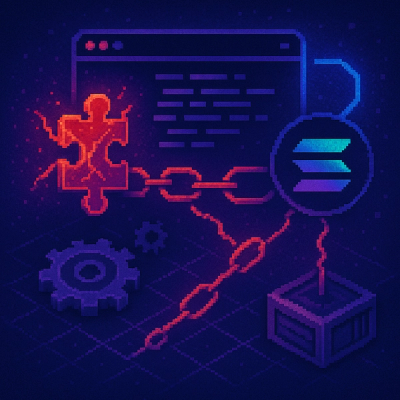DAOcomponents
Componentizing DAOstack's client library, enabling easier React application integration. The hope is to be able to turn any app into a DAO enabled dApp by adding ~2 components.
Prerequisites
- node v8.10.0
- docker & docker-compose
Running
npm i
npm run start
Usage
Example 1: Simple Example
App.tsx
<Arc config={new ArcConfig("web3", "graphql", "graphql-ws")}>
<DAO address="0x...">
<ExampleDAOView />
</DAO>
</Arc>
Now that the DAO component has been added to the root of our application, any component rendered within its tree will have access to this DAO's contexts.
ExampleDAOView.tsx
ExampleDAOView() => (
<DAO.Data>
{(data: DAOData) => (
<>
<div>{"DAO: " + data.name}</div>
<div>{"Token: " + data.tokenName}</div>
</>
)}
</DAO.Data>
)
You can also interact with the Code context (NOTE: not implemented yet):
<DAO.Code>
{(code: DAOCode) => (
<button onClick={async (e) => {
await code.createProposal(...)
}} />
)}
</DAO.Code>
Example 2: Component Context Inference
<DAO address="0xMy_DAO">
...
<Member address="0xMy_Address">
...
</Member>
...
</DAO>
VS
<Member address="0xMy_Address" daoAddress="0xMy_DAO">
</Member>
NOTE: Both of these examples work, but one is easier to maintain and reuse throughout your app.
Example 3: Component Lists
<DAOs>
<div>DAO Details:</div>
<DAO.Data>
{(dao: DAOData) => (
<>
<div>{"Name: " + dao.name}</div>
<div>{"Token: " + dao.tokenName}</div>
</>
)}
</DAO.Data>
</DAOs>
Example 4: Context Forwarding
<DAO.Data>
<Member.Data>
{(dao: DAOData, member: MemberData) => (
<>
<div>{dao.address}</div>
<div>{member.address}</div>
</>
)}
</Memeber.Data>
</DAO.Data>
Example 5: All Together
The below example will:
- Render a list of all DAOs. For each DAO...
- Print the DAO's name.
- Render a list of all Members. For each member...
- Print the Member's information.
- Provide a button that allows you to propose a reward for that member.
<DAOs>
<DAO.Data>
{(dao: DAOData) => (
<div>{dao.name}</div>
)}
</DAO.Data>
<Members>
<DAO.Code>
<Member.Data>
{(daoCode: DAOCode, member: MemberData) => (
<>
<div>{member.name}<div>
<div>{member.reputation}</div>
<button onClick={async (e) => {
await daoCode.createProposal(..., member.address, ...)
}}>
Propose Reward
</button>
</>
)}
</Member.Data>
</DAO.Code>
</Members>
</DAOs>
TODO: examples of the different supported child types (fn & components)
Architecture
1 Component, 1 Entity
DAOstack's client library defines an object model where each class instance represents a semantic object within the protocol (ex: DAO, Proposal, Member). These class instances have access to the various contracts they interact with, and the semantic data model stored in a GraphQL server. Going forward, we will call these class instances "Entities".
Each DAOcomponent creates an entity internally, and then exposes it to other components through React Contexts.
For Example: The component <DAO address="0x..."> contains an instance of class DAO.
Note: ComponentLists break this rule, but will be covered further down.
Component Contexts (Data, Code, Prose)
Each component has 3 core contexts:
- Data - GraphQL Schema
- Code - Abstracted Protocol Functionality
- Prose - TBD
In addition to these core contexts, you can also access:
- Entity - The raw backing entity from the client library.
- Logs - The logs associated with this component.
Each part of the component is exposed through a React Contexts. This allows you to use different parts of the component throughout your application, while only defining it once farther up the DOM. See "Example 1" in this document.
Component Lists
For each component type, you can add an s after its name and it'll become a list of that entity type. For example: DAOs, Proposals, Members. See "Example 3" in this document.
Guiding Principles
This library aims to:
- Improve Usability
- Reduce Boilerplate
- Reduce Rerendering
- Be Unobtrusively Designed
- Simple By Default, Complex If Desired
- Minimize & Encapsulate Dependencies
- Improve Logging / Tracability



